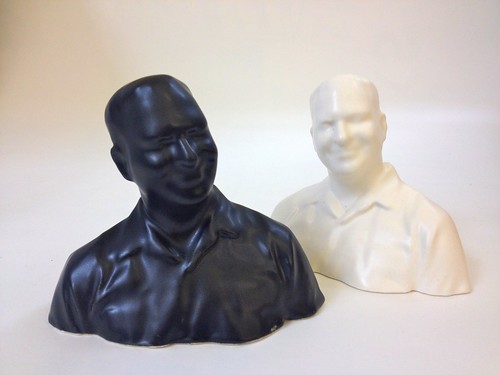##Ceramic 3D printing The 3D ceramic printing process often involves two phases: The printing of the object by laser sintering using a material in powdered form (plastic is often used) and the varnishing of the same object using ceramic at temperatures exceeding 1000 degrees Celsius.
Objects created by ceramic 3D printing are:
- Water proof
- Heat resistant
As a result this procedure is useful for producing dishware (plates, cups).
 source: Shapeways via Flickr
source: Shapeways via Flickr
##3D Printing wood
3D wood printing is a relatively recent procedure. Printers meant for general use and based on FDM technology utilise filaments made of a combination of particles and polymers made from wood. Objects produced by these devices bear a closer
The advantage of 3D wood printing lies in the finished product as objects produced through this means possess impressive textures and colours.
##3D wax printing Wax is mainly used to create molds used for creating objects made of metal or other materials. This process is commonly known as lost wax casting and is used in the production of metal objects in small quantities with batches generally containing one to 50 items.
##3D Printing Sand 3D printing using sand is a very important process for smelters. This is because it makes the metal used for casting easier to work with. It is particularly useful for small batch production in terms of cost and timing. The molds used do not require specialized equipment which shortens production periods.
3D sand printing is achieved using catalytic converters made from binding agents which bind the grains of sand creating layers which are used to make the required object.
##3D glass printing 3D glass printing is a process which is still in its exploratory stages with several attempts resulting in failure. Nevertheless it is possible that these experiences may result in success. A little patience is all that is required!
##3D printing using concrete Like 3D glass printing process is still in its exploratory stages with limited information available on its progress which however has surpassed that of 3D glass printing as objects have been produced using this method. A team of researchers at Loughborough University has currently dedicated itself to this process (see the video above).
##3D printing using chocolate
